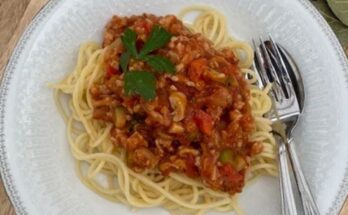Well, the age-old war between rice and roti is still on! No Indian meal is complete without having rice or roti or both and we have been party to numerous arguments in favour of each.
We have heard pretty much everything. From “eating rice will give you diabetes” to “going off wheat will help you lose weight”…
.but do we really know our staples and understand the whole controversy around it?
Hi, I’m Akansha Sinha, nutritionist and founder of Beyond the Weighing Scale and I’m here to help you understand the nutrient profile of Rice and Roti and which one is healthier and why?
Rice is a cereal grain and is the most widely consumed staple food for a large part of the world’s population.
There are different varieties of rice like white, brown, red and black and the nutrient profile also changes according to the variety that you eat.
In India, we largely consume polished white rice that has been stripped off the husk and the bran. During this process, the grain is free of all impurities making the rice more digestible and easy on your gut.
One bowl of rice gives you 100 Kcals, 23 gms of carbohydrate, 2 gms of protein and 0.1 gms of fat. Rotis are made from wholemeal flour also known as atta.
Variations of rotis are found in diverse cultures across the globe and is normally eaten along with cooked vegetables or curries. Rotis made from whole wheat flour are a great source of fiber, protein, iron and calcium.
One medium-sized roti gives your 100 Kcals, 22 gm carbohydrate, 3 gms of protein and 0.5 gms of fat.
Now you might think, that one bowl of rice and 1 medium roti give you almost same macronutrients so what would be the distinguishing factor?
It is the way these carbs are processed in our bodies. Polished rice lacks fiber and is primarily composed of simple carbs, your body quickly converts them into glucose and releases it in your bloodstream.
This glucose is stored as an energy reserve, is used for immediate functioning of your body and the excess is stored in your body as fat!
Yes, you heard that right! Any excess amounts of carbohydrates are converted into fats and are stored in the body.

And it is because of this reason why you feel sleepy or lethargic after consuming a huge portion of biryani! On the other hand, Rotis are made from whole wheat atta that has fiber and is made up of complex carbs.
This makes your body do all the extra work to convert it into glucose and release it in your bloodstream. The work that your body puts in slows down the release of glucose in the bloodstream.
Rice and Roti both provide us with essential carbohydrates that are needed for our daily functioning so, the question here is what should you pick?
If you are someone trying to lose weight, you need to pick your staples carefully.
When consuming rice, ensure that you combine it with salad or a vegetable that has fiber and protein from any of the dals or chicken.
The one thing that is crucial to your diet is controlling your portion size to ensure you do not eat extra carbohydrates and as a result, avoid storing them as fat.
Rotis are high in sodium and potassium. Avoid adding extra salt while kneading the dough and for those whose diet is restricted it would be best to avoid having rotis.
If you are a diabetic, avoid consuming both rice and rotis together. Choose complex carbs over simple carbs like oats, quinoa, rajgira to avoid instant release of sugar in your bloodstream.
When consuming rice, keep your portions in check and pair your carbohydrates well with good fats, protein and fibre.
Rice is an appropriate choice when you suffer from indigestion, diarrhoea or any gut infections as it is easy to digest, low in fibre and is not harsh on your tummy.
So ladies, when we consider the complete nutrient profile of roti and rice, Rotis are definitely a better option.
But don’t you shy away from rice. Carbohydrates are not your enemy! It is the type i.e simple or complex, the quantity i.e how much you eat and the quality i.
e whole grains over processed or refined is what matters! Until next time stay tuned and stay GLAMRS


